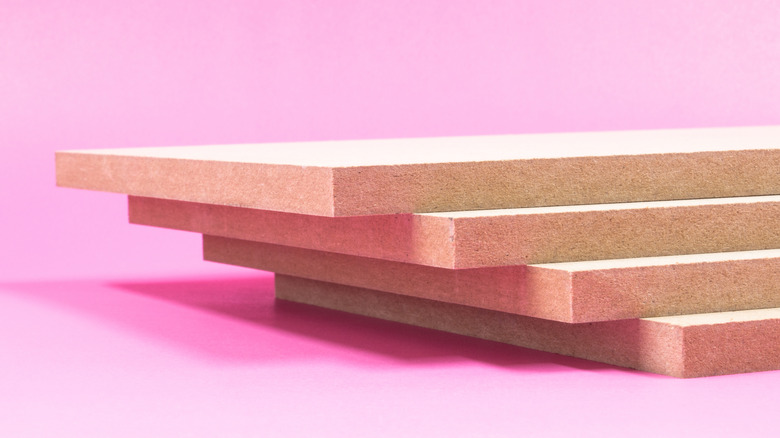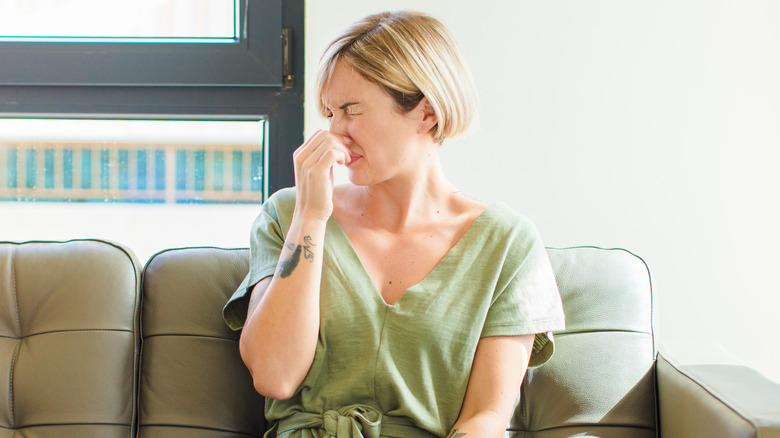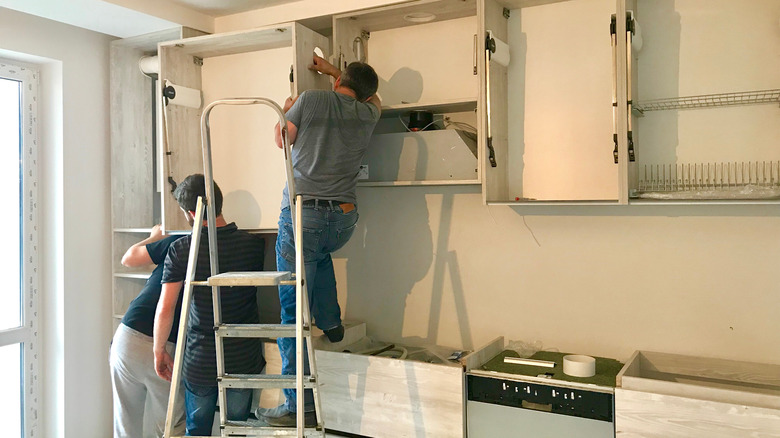What Is MDF Wood?
In contrast to solid wood or engineered wood products, medium-density fiberboard (commonly known as MDF) is generally more affordable, versatile, and readily available — which often makes it the preferred choice for many light carpentry projects. Sawdust and shavings from industrial milling are dehydrated and then mixed with resin and wax to create wood panels. Those panels are then compressed under intense heat and pressure, which makes them uniform in size and extremely durable, notes How Products Are Made. Before the panels are cut to their final dimensions, they are sanded to give them an incredibly smooth finish that can be painted or stained.
MDF panels are available in various thicknesses, from 2 mm up to 60 mm, making them suitable for a wide range of uses. According to Kitchen Design Partner, popular applications for MDF panels include cabinets, doors with moldings, shelving units, and other similar types of furniture. It's prized for its strength and resistance to warping and cracking. But, there are some notable downsides to the product as well.
The downsides to MDF
According to Civil Today, MDF boards contain a form of formaldehyde that is gradually released (called off-gassing) and can potentially cause irritation to the skin, eyes, nose, and throat. Off-gassing can occur throughout the lifetime of the product, but is most prevalent during its first year, especially when first removed from its cardboard packaging (for pre-made furniture that is assembled at home.) Green Home Guide reports that these gasses are more likely to be released when exposed to heat and humidity, but sealing the product with paint or varnish can help reduce emissions. The CDC says formaldehyde concentrations can accumulate in homes from a variety of sources such as MDF products, cushions, mattresses, and vinyl flooring.
Another thing to keep in mind when using MDF is that its smooth finish can scratch or marr easily and its corners can be easily damaged. MDF is especially susceptible to ruin from water or moisture. Water Damage Plus explains that some products may be labeled water-resistant, but that refers to a protective top layer only and is not the same as being waterproof. Even with the best care, moisture can eventually seep into MDF, causing the material to dissolve, swell, warp, or buckle.
The benefits of MDF
The smooth surface of MDF creates no splinters, burns, or tear-outs (described by WOOD magazine as parts that break away unevenly during cutting.) Real wood, on the other hand, is prone to knots, grain, and warping. Most MDF panels these days undergo some kind of treatment to make them more durable – boards are marked with blue, red, or green to indicate that they are fire retardant, moisture-resistant, or both. MDF panels come in larger sizes than typically available with real wood, and they're also easy to paint, stain, or cover with veneer.
In addition, there are ways that MDF is actually good for the environment. Since the panels are made of recycled wood chips and sawdust, they turn waste materials into something usable. Simon Spencer Designs calls MDF environmentally friendly because it uses timber from quick-growing pines. And, when properly cared for, it's fairly durable as well, which means replacement isn't necessary for many years, saving extra trash from reaching the landfills.


